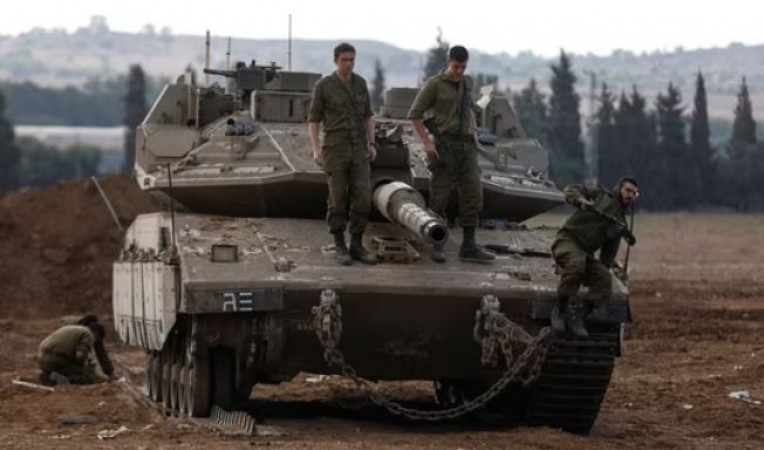
The Israeli-Hamas conflict, characterized by frequent clashes and escalations, is a long-standing and deeply rooted geopolitical issue that has seen countless lives lost and continues to shape the political landscape of the Middle East. At the heart of this enduring conflict lies a significant disparity in military power between the State of Israel and the Palestinian militant group Hamas. Israel, as a nation-state with advanced military capabilities, faces off against Hamas, a non-state actor that governs the Gaza Strip. To understand the dynamics of this conflict, it's crucial to examine the military forces each side possesses.
Israel's Military Power:
1. Technology and Equipment:
Ground Forces: Israel maintains a well-equipped and highly trained standing army, with advanced tanks, armored personnel carriers, and artillery. The Israel Defense Forces (IDF) is among the most technologically advanced and well-funded in the world.
Air Force: The Israeli Air Force (IAF) boasts cutting-edge fighter jets, transport aircraft, and helicopters. It has a strong aerial defense system, including the Iron Dome anti-missile system.
Navy: Israel's navy is well-equipped with missile boats, submarines, and other vessels capable of protecting its coastline.
2. Missile Defense:
Israel has developed one of the most sophisticated missile defense systems globally, including the aforementioned Iron Dome, which can intercept short-range rockets and artillery shells, and the Arrow system for countering long-range ballistic missiles.
3. Intelligence and Cyber Capabilities:
Israel's military intelligence and cyber capabilities are highly advanced, allowing them to gather vital information and conduct cyber warfare effectively.
4. Nuclear Arsenal:
While Israel maintains a policy of nuclear ambiguity, it is widely believed to possess a significant nuclear arsenal, which further deters potential adversaries.
Hamas' Military Power:
1. Guerrilla Warfare:
Hamas relies on guerrilla warfare tactics, utilizing asymmetric warfare methods, including ambushes and hit-and-run attacks, to target Israeli forces.
2. Rockets and Missiles:
Hamas possesses an arsenal of mostly short-range rockets and some mid-range missiles. While they may lack the precision and guidance systems of Israeli munitions, their sheer number poses a significant threat, particularly to southern Israel.
3. Tunnels:
Hamas has constructed an extensive network of tunnels, which they have used for various purposes, including infiltration into Israeli territory and smuggling arms and supplies.
4. Irregular Forces:
Hamas has its military wing, known as the Izz ad-Din al-Qassam Brigades, and its fighters are committed and determined. They may lack the formal training of a conventional military but make up for it with their dedication to their cause.
5. Local Support:
Hamas enjoys local support in the Gaza Strip, both from its government and the population. This support can be crucial in a protracted conflict.
Comparing Military Power:
The military power comparison between Israel and Hamas is inherently asymmetric. Israel's technological superiority, well-equipped conventional forces, sophisticated missile defense systems, intelligence capabilities, and possible nuclear deterrence far outweigh what Hamas can muster. The overwhelming military strength of Israel has allowed it to maintain air and naval supremacy and to conduct surgical strikes against specific targets. Conversely, Hamas relies on guerrilla tactics, crude rocketry, and a decentralized structure. They are more focused on asymmetrical warfare and can deploy relatively simple yet numerous rockets.
In this context, the Israeli-Hamas conflict often results in a significant humanitarian toll due to Israel's overwhelming military might and Hamas's use of rocket attacks that can indiscriminately target civilian areas. The conflict reflects the difficulty of reconciling an occupying force's security concerns with the rights and aspirations of a population living under occupation.
In conclusion, the military power discrepancy between Israel and Hamas is evident, with Israel holding a commanding advantage in terms of technology, equipment, and conventional forces. However, the protracted nature of the Israeli-Hamas conflict, with its recurring escalations, underscores that military superiority alone cannot resolve the underlying issues. A sustainable solution requires addressing the core political, social, and humanitarian concerns that drive this ongoing conflict.
Israel Issues 3-Hour Deadline in Gaza as Tensions Escalate
Israel Voices Disappointment over China's Stance on Hamas Attack
Israel Gears Up to Counter Hamas in Gaza, Readies Multi-Front Assault